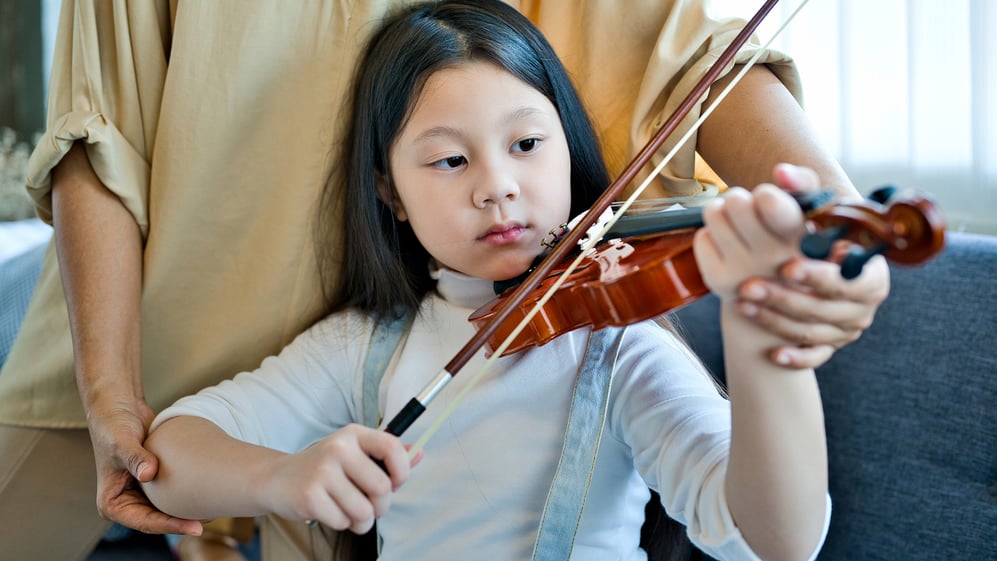I’m a rule follower.
I hate making decisions, and rules tell me exactly what I should do. They are easy to follow because I don’t need to think about anything. If it’s a rule, I follow it. All of this makes me a good sight-reader. To me, it’s comforting to know that all the notes and harmonies and rhythms are laid out there and simply need to be followed.
Following the Rules
When we teach our students music, we should teach them to know, to understand, and to follow the rules. Once they have a firm grasp on those rules, they are able to knowledgeably expand their music-making. But they must know the grammar of the subject intimately before they can begin to bend that grammar to their wills. My piano students are not allowed to change anything about a piece to their own liking until they can play it perfectly as written. When they can demonstrate to me their capable grasp of the rules, then they can have the freedom to break them knowledgeably and intentionally.
Music beyond the Rules
Rules, both in life and in music, are good. We need the structure of rules to guide our actions, whether we are serving in our vocations or playing an instrument. In music, though, following the rules or sight-reading perfectly takes us only so far. We still have to make the music. We can follow all the rules we want, but in the end, music is a wild, unpredictable thing that must be communicated from the human experience.
Music itself, the sound waves vibrating through the air, follows rules of physics. That’s how we get beautiful harmonies. A song scientifically dissected is simply a series of pitches caused by creating different lengths of sound waves through the air. These pitches are arranged in a certain order to give us music. But, like all forms of art, the sequence of sounds and the arrangement of notes dictated by the composer mirrors an aspect of life and of human nature and thus cannot always be easily explained. A hauntingly beautiful melody moves us deeply, but we cannot say why. We may identify certain intervals that strike us as pleasing or mysterious or sad, that are universally acknowledged as expressing such emotions, but there is no explanation as to why those certain intervals sound that way to our ears. A student may play a piece perfectly, following every notation of note, rhythm, articulation, and dynamic, but still be missing something. How do we, as music teachers, explain the unexplainable to them?
Music through Stories
We must tell them stories. We might tell our students to imagine this or that scene or situation and to play the music accordingly and expressively. We might ask them to use their imaginations and to imagine something human, something that is part of a narrative, not merely a collection of facts. They must plumb the depths of their own story and experience in addition to the stories and experiences of the entire human race.
It is thus necessary for the young, who have little experience, to learn from the old, who have much experience. An eleven-year-old may not have adequate material from his short time on earth for playing the Goldberg Variations or a Beethoven sonata with the necessary emotional depth, but he can learn the nuances of crafting beautiful song from listening to his teacher play the music. Sometimes the only way to help children learn is to let them listen to good music played well. Once they have learned the general notes and rhythms, play their piece for them to help them learn to capture the emotion and expression of the music. Furthermore, children, especially children desiring to become musicians, need to be surrounded by music constantly. I recently wrote a post about creating a music-making culture as a family. Play music for your children constantly. Not yet having their own experience, they must learn through the experience of others.
The Ultimate Story
The beauty of life lies in our stories. Our world is crafted by narratives that, while following certain rules, are messy, wild, unpredictable, shocking, and emotional. The ultimate narrative, the story of salvation, is no less so. Music captures these stories in expressive and wonderful ways, ways that appeal to our humanness and are almost never sterile, clean, or neat. Our children need to hear this wonder and beauty in music so that they can also recreate the humanness of the art.
There are rules that must be followed, but as good Lutherans, we know that we are incapable of following them all perfectly. Our music, then, expresses the shocking reality of the incarnation that we celebrate at Christmas: God became man under the wildest of circumstances to save His wayward people. Let us play our music not with plodding predictability, but with our messy, wild, and human story of salvation in mind.
This Christmas, teach your children to play and sing beautiful Christmas carols from Lutheran Service Book.














.jpg?width=50&height=50&name=IMG_20220621_160541_456%20(1).jpg)
